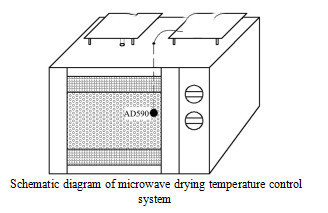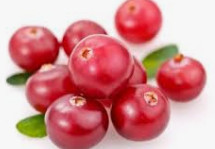Effect of drying methods on antioxidant activity of cranberry

Absrtact: Using fresh Cranberry as raw material, the flavonoid content of cranberry samples was determined under different drying methods by hot air drying at 65 C, microwave drying equipment and vacuum freeze drying respectively, and compared with fresh cranberry. Then, three antioxidant systems, DPPH, hydroxyl radical and iron ion antioxidant reduction ability, were established. The antioxidant activities of three different drying methods of cranberry were compared.
The results showed that the content of flavonoids in cranberry dried by hot air at 65 C was lower than that of the other two drying methods. The mass concentration of flavonoids in cranberry dried by hot air was 95.36 mg/mL, followed by vacuum freeze-drying and 85.43 mg/mL. The lowest concentration of flavonoids was 70.26 mg/mL after microwave drying, and the three antioxidant activity indexes were higher after hot air drying. The hot air drying method has become the best way to process cranberries in order to maintain the health effects of cranberries.
Key words: Cranberry microwave drying; drying method; total flavonoids; antioxidant activity

Cranberry is a kind of berry fruit, its sweet and sour taste, juicy pulp, gradually loved by people. Cranberry is very popular in the United States, and its processed products are gradually introduced into our market. The main bioactive components of cranberry are proanthocyanidins, anthocyanins, terpenoids, organic acids, flavonoids, dietary fibers and minerals. Cranberry has a variety of medicinal value and health functions.
Flavonoids in cranberry are effective antioxidants. Cranberry is a powerful inhibitor of gingival biofilm formation, which can play a beneficial role in preventing and treating periodontitis. Nowadays, cranberries are usually sold in the form of dried cranberries or freeze-dried fruit powder in the market, so the drying technology of cranberries is very important. Drying treatment can inhibit the respiration and other physiological functions of substances, reduce the loss of nutrients, avoid microbial reproduction, and is conducive to the preservation of substances. The effects of different drying methods on flavonoid content and antioxidant activity were studied in this experiment, and the best drying method was found to play an important role in the processing and marketing of cranberries.
Different drying methods have different effects on flavone concentration and antioxidant activity of cranberry.
The lowest influence on flavonoid concentration was hot air drying at 65 ~C, and the flavonoid concentration was 95.36 mg/mL. The scavenging rate of hydroxyl radicals in samples dried by hot air at 65 ~C was in the concentration of samples.
The results showed that 73.40% of the samples were at 0.015 mg/mL, and the minimal effect on the antioxidant and reductive ability of ferrous ions was to dry them in hot air at 65 C. The absorbance of the samples was 2.74% at 0.015 mg/mL.
For the determination of DPPH scavenging ability of cranberry samples, the minimal influence was hot air drying at 65 C. The DPPH kinetic curve was stable and the absorbance was 0.004. Therefore, hot air drying at 65 C had the least effect on the flavonoid concentration of cranberry and the antioxidant and reducing substances contained in cranberry. Hot air drying is also a simple and fast way to dry and process materials, which is also one of the conditions to make it the best way to process Cranberry dried fruit.